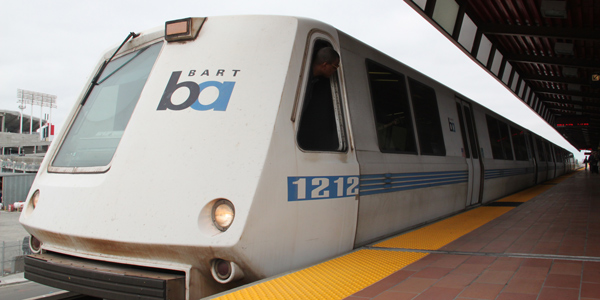By Robert Mullin
CAISO is proposing to amend its Tariff to expand the definition of a “load-serving entity” to include any organization granted authority to serve its own electricity needs.
The Tariff currently recognizes as LSEs only those entities that sell electricity or serve load to end users, a description that covers utilities, federal power marketing agencies and community choice aggregators. A special exception was made for the State Water Project (SWP), a California agency that directly engages the wholesale market to cover its own energy requirements.
The ISO is seeking a broader definition to accommodate the San Francisco Bay Area Rapid Transit District (BART), which, like the SWP, serves its own load but does not meet the standard definition of an LSE.
“We’ll see what other entities will participate under this definition, but we’re not sure there are any at this point,” Perry Servedio, senior market design and regulatory developer at CAISO, said during an Aug. 23 stakeholder call to discuss the proposal.
At the end of the year, BART’s transmission contract rights on the Pacific Gas and Electric network, which predate the existence of the ISO, will expire. Those rights will convert to CAISO service, leaving the agency exposed to congestion charges.
For a recognized LSE facing a similar circumstance, CAISO provides a remedy: The LSE can cover its exposure by seeking an allocation of congestion revenue rights (CRRs) in the initial round of the ISO’s annual allocation process. The ISO treats the expiring contract rights as if they were expiring annual CRRs.
But that process is not available to BART.
As an interim measure, CAISO last month filed with FERC to seek another temporary exception to the definition in order to enable BART to participate in this fall’s 2017 CRR allocation (ER16-2327).
By expanding the definition, the ISO hopes to eliminate the need for one-off exceptions. The revised Tariff would categorize BART and SWP as LSEs “granted authority pursuant to California state or local law, regulation or franchise to serve their own load.”
The amended language sent up red flags for some stakeholders, who worried that any California entity granted such authority would qualify as an LSE and therefore be required to procure adequate reserves to support their load.
Ernie Hahn, senior resource manager with the Metropolitan Water District of Southern California, said his agency is concerned about what the change would mean upon expiration of its transmission contract rights with Southern California Edison.
“This came out of the blue and we’re a little distressed by it,” he said. “We don’t understand what the [resource adequacy] implications will be.”
“Our intent is not to require entities to do this,” said Brad Cooper, CAISO senior manager of market design and regulatory policy. “To the extent that there’s an arrangement like yours, you’re not considered an LSE.”
But David Zlotlow, CAISO senior counsel, confirmed that the district would face the requirement once its contract expires.
“I object to the change because you haven’t given us enough time to prepare for the [resource adequacy] requirement,” Hahn said. He encouraged the ISO to make an “incremental change” to the definition, similar to the SWP exception.
“When I read this, it suggests to me that entities serving load behind the meter will get captured by this,” said Steven Kelly, director of policy at the Independent Energy Producers Association.
“A day or two ago, in anticipation of this call, we had that same thought,” Zlotlow said. “There might be a word or two to add to this definition.”
“Do storage devices or pumped storage qualify as LSEs because they serve their own load?” asked Mark Smith, vice president at Calpine.
“No, because they’re not serving end users, they’re just sending back to the grid,” Zlotlow replied.
Jan Strack of San Diego Gas & Electric said the change raises questions about what entities are affected, and how.
“I think you need to be sort of thoughtful about how wide this net gets thrown,” Strack said.
“We definitely want to hear from you if we’re missing something with this definition — or if we need to tighten it up,” Servedio said.
Stakeholder comments on the proposal are due Sept. 2. ISO staff plan to submit the changes for board approval in October.




